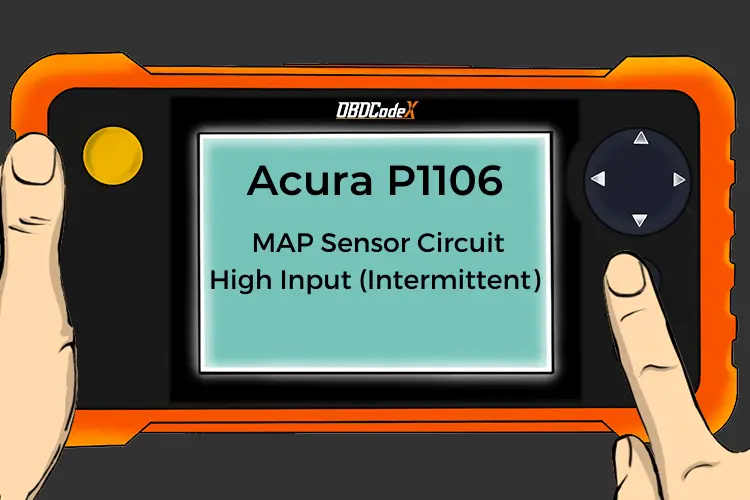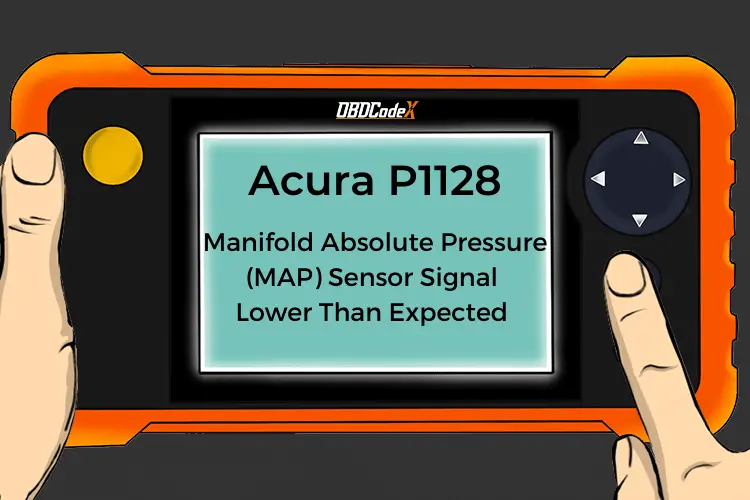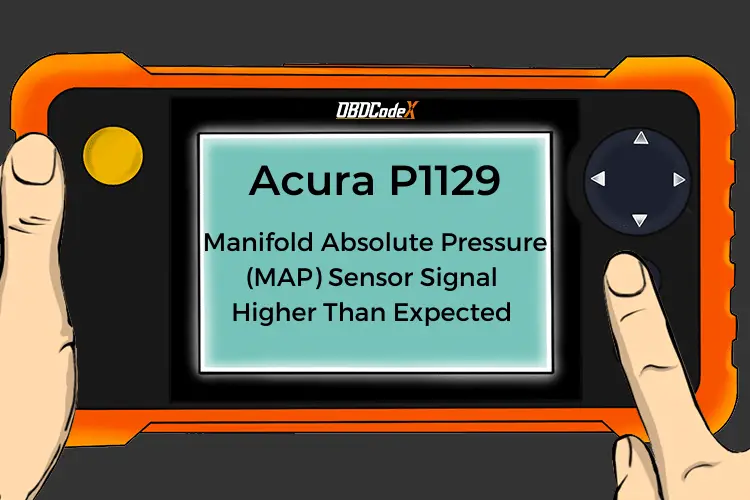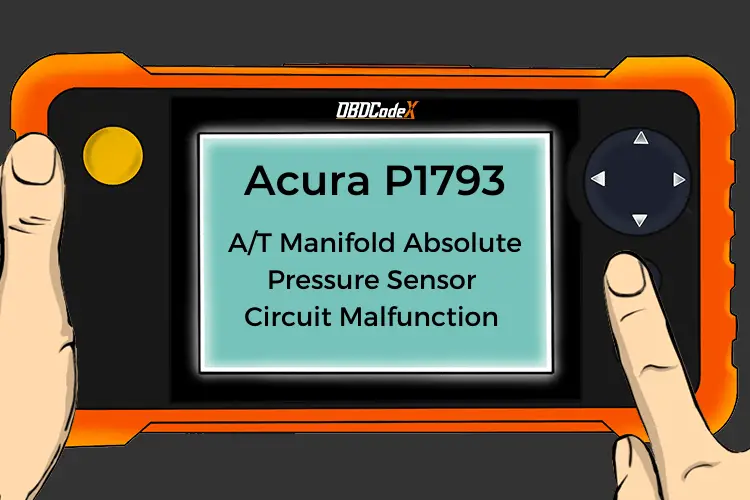P0108: Manifold Absolute Pressure/Barometric Pressure Circuit High Input
Is your scanner showing P0108?
No worries. We'll show you what it means and how to deal with it.
P0108: Manifold Absolute Pressure/Barometric Pressure Circuit High Input
OVERVIEWWhat Does The P0108 Code Mean?
The MAP (Manifold Absolute Pressure) sensor measures engine manifold negative air pressure. It’s usually a three wire sensor: a ground wire, a 5 volt reference wire from the PCM (Powertrain Control Module) to the MAP sensor, and a signal wire that informs the PCM of the MAP sensor voltage reading as it changes.
The higher the engine vacuum, the lower the voltage reading. The voltage should range between about 1 volt (at idle) to about 5 volts (WOT wide open throttle).
If the PCM sees the voltage reading from the MAP sensor is greater than 5 Volts, or if the voltage reading is higher than what the PCM considers normal under certain circumstances, a P0108 DTC will set.
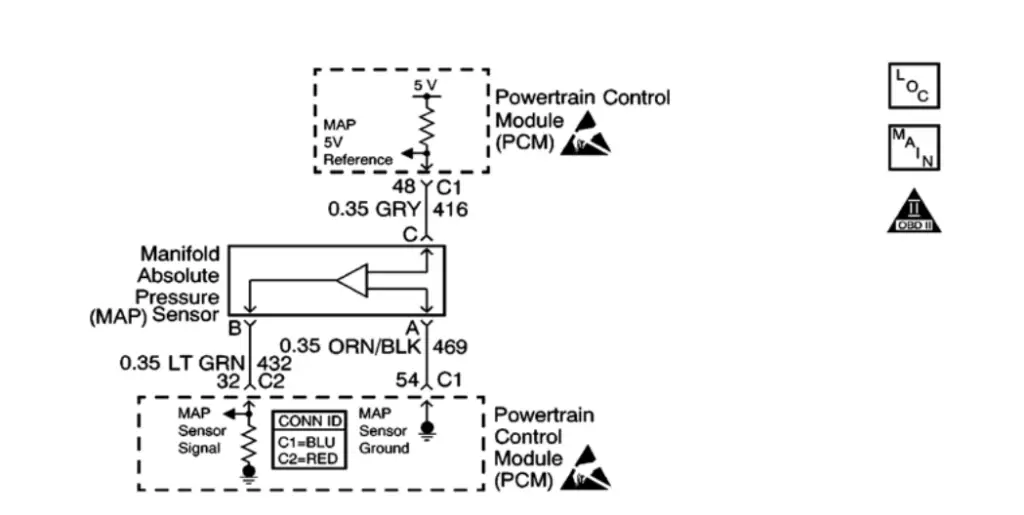
P0108 wiring diagram
What Are The Symptoms Of The P0108 Code?
Symptoms of a P0108 DTC code may include:
- MIL (Malfunction Indicator Lamp) will likely be on
- Engine may run poorly
- Engine may not run at all
- Fuel mileage may decrease
- Presence of black smoke at exhaust
What Are The Potential Causes Of The P0108 Code?
Potential causes of a P0108 code:
- Bad MAP sensor
- Leak in vacuum supply line to MAP sensor
- Engine vacuum leak
- Short on signal wire to PCM
- Short on reference voltage wire from PCM
- Open in ground circuit to MAP
- Worn engine causing low vacuum
How Can You Fix The P0108 Code?
A good way to diagnose if the MAP sensor is to blame would be to compare the KOEO (key on engine off) MAP sensor reading on a scan tool with the Barometric pressure reading. They should be the same because they both measure atmospheric pressure.
If the MAP reading is greater than 0.5 volt off of the BARO reading, then replacing the MAP sensor would likely fix the problem. Otherwise, start the engine and observe the MAP reading at idle. It should normally be about 1.5 volts (varies according to altitude).
a. If it is, the problem is likely intermittent. Check all the vacuum hoses for damage and replace as necessary. You can also try wiggle testing the harness and connector to reproduce the problem.
b. If the scan tool MAP reading is more than 4.5 volts, check the actual engine vacuum reading with the engine running. If it is less than 15 or 16 in. Hg, then the PCM is probably not seeing enough vacuum (due to a worn engine, perhaps) for a given operating condition (which causes a higher than normal voltage signal to the PCM) and setting the code. Repair the engine vacuum problem and retest.
c. But, if the actual engine vacuum reading is 16 in. Hg or more, then unplug the MAP sensor. The scan tool MAP reading should indicate that there is no voltage present. Check that the ground from the PCM is intact and also that the MAP sensor connector and terminals are tight. If the connection is good, then replace the map sensor.
d. However if, with KOEO, & the MAP sensor unplugged, the scan tool shows a voltage reading, then there may be a short in the harness to the MAP sensor. Turn the ignition off. At the PCM unplug connector and remove the MAP signal wire from the connector. Re-attach the PCM connector and see if with KOEO, the scan tool MAP reading shows voltage. If it still does, replace the PCM. If not, check for voltage on the signal wire you just removed from the PCM. If there is voltage on the signal wire, find the short in the harness and repair.
Other MAP Sensor codes: P0105– P0106 – P0107 – P0109
Recommended Parts
Below are some recommended auto parts to help you address the trouble code affecting your vehicle and get it running smoothly again:
>>> MAP Sensor
>>> Twippo 372Pcs Waterproof Wire Connectors Kit
>>> LAUNCH X431 PROS V+ Elite Bidirectional Scan Tool
Note: During the purchasing process, please check carefully whether the part you want to buy fits your car!
Check This Video For Reference
Reference Sources
Diagnostic Trouble Code (DTC) Charts and Descriptions for P0108 – Page 22.

